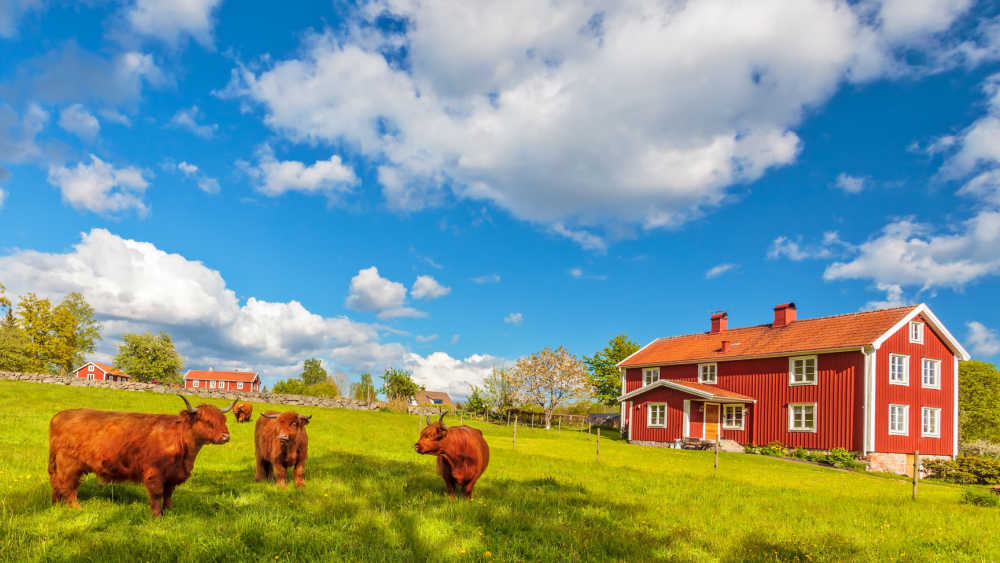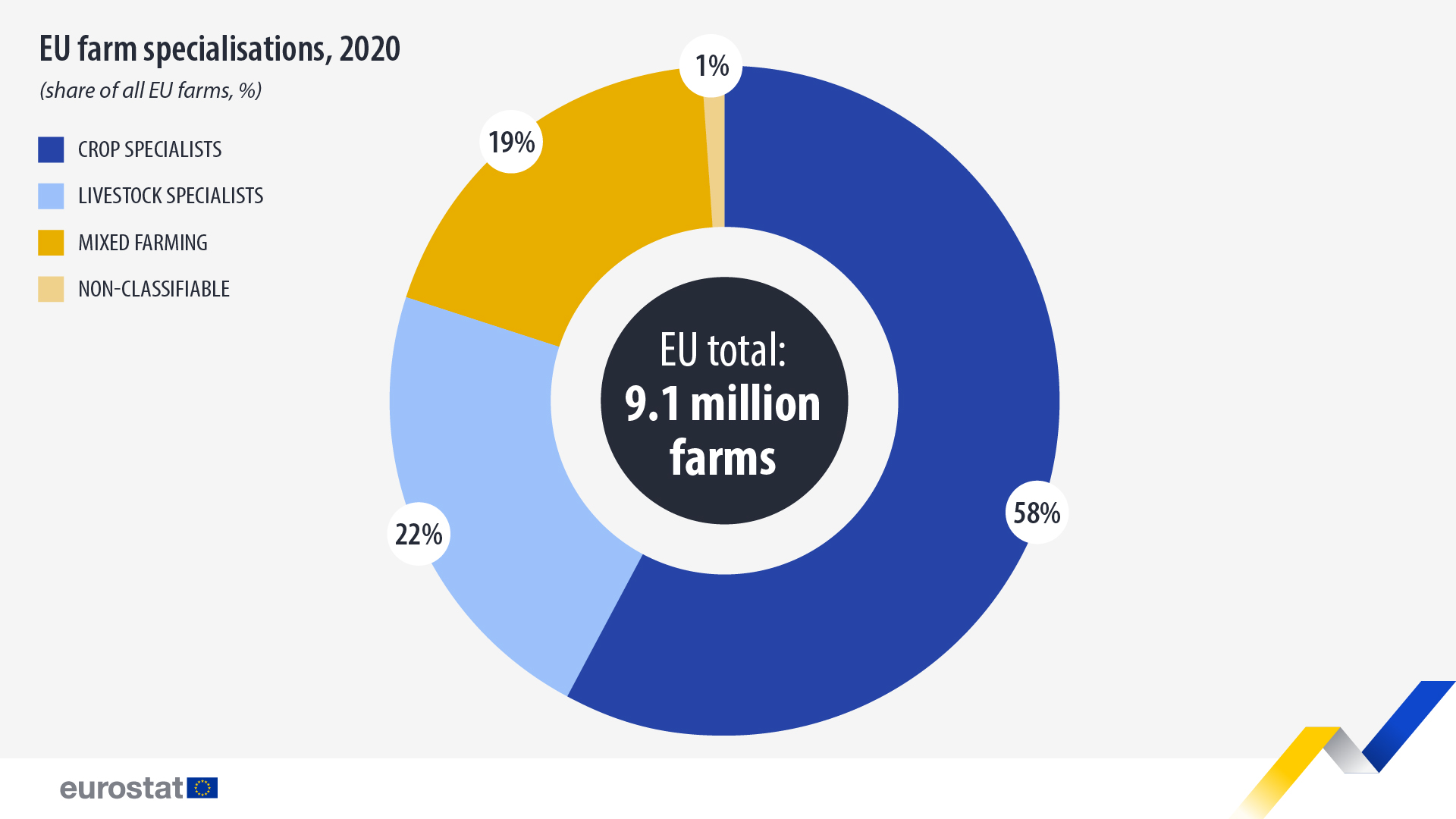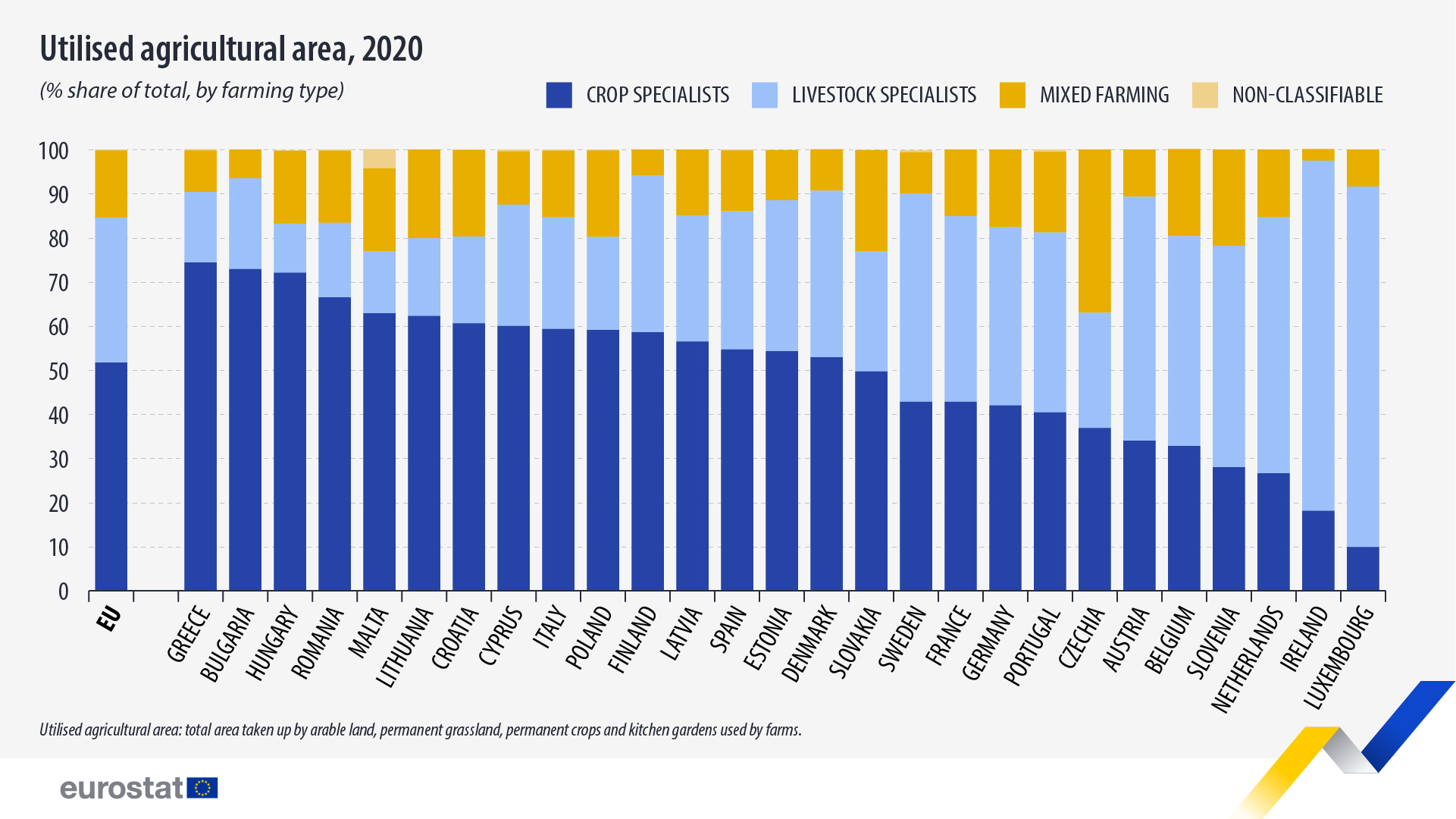EU farms: 5.3 million fewer in 2020 than in 2005

In 2020, there were 9.1 million farms in the EU. This is an estimated 5.3 million fewer farms than in 2005 (the equivalent of a decline of about 37%).
Farms can be classified according to the activities that dominate farm income. Some farms earn income from diverse activities (mixed farming), while others earn income mainly from either crops or livestock. Specialised farming refers to when one activity accounts for at least two-thirds of the total standard output of a farm.
Although there were fewer EU farms of all types in 2020 than in 2005, declines in some types of farms were much sharper than others; there were 2.6 million fewer mixed farms, 1.6 million fewer livestock specialist farms and 0.9 million fewer crop specialist farms.
Source dataset: ef_lus_main
Almost three-fifths (58%) of all farms in 2020 were categorised as specialist crop farms: just over one-third (34%) specialised in field cropping, about one-fifth (22%) in permanent crops and a small share (2%) in horticulture.
Slightly more than one-fifth (22%) of the EU’s farms were specialist livestock farms, with specialisation in dairying being the most common type (5% of all farms), followed by cattle-rearing and fattening, poultry, and sheep, goats and other grazing livestock (each 4%).
In 2020, just under one-fifth (19%) of all farms in the EU were mixed farms, meaning that they had multiple crops and/or livestock without a single activity making up at least two-thirds of standard output.
Some farms (1% of the total) could not be classified because they are subsistent in nature or because they produce goods for which no standard output can be calculated.
Half of the EU’s utilised agricultural area found on crop specialist farms
In 2020, just over half (52%) of the EU’s utilised agricultural area (UAA) was found on crop specialist farms, with about one-third (33%) on livestock specialist farms and the rest on mixed farms (15%). At country level, the share of UAA managed by each specialisation type strongly correlated with the number of farms by type of specialisation.
Source dataset: ef_lus_main
In broad terms, high proportions of crop specialist farms were observed in many Eastern European countries, such as Bulgaria (73%), Hungary (72%), and Romania (67%), as well as in Mediterranean countries like Greece (74%), Malta (63%), and Croatia (61%). This often reflected favourable conditions for growing particular kinds of cereals, fruit and/or olives.
Specialist livestock farms were more prevalent in several countries in northwest Europe, such as Luxembourg (82% of all farms), Ireland (79%) and the Netherlands (58%).
For more information
- Statistics Explained article on Agri-environmental indicator - specialisation
- Thematic section on agriculture
- Database on agriculture
Methodological notes:
- A “specialist field crop" farm can be a specialist in "cereals, oilseeds and protein crops" or in "general field cropping". These two sub-categories can then be broken down further into specialist on e.g. "rice" or "root crops". For more information on the classification of agricultural holdings by type of farming see the Basic Act, Council Regulation (EC) No 1217/2009 of 30 November 2009 that set up a network for the collection of accountancy data on the incomes and business operation of agricultural holdings in the European Community. This is supplemented by Commission Delegated Regulation (EU) No 1198/2014 of 1 August 2014. The Basic Act is supported by Commission Implementing Regulation (EU) 2015/220 of 3 February 2015 and by the amending Commission Implementing Regulation (EU) 2019/1975 of 31 October 2019.
If you have any queries, please visit our contact us page.


